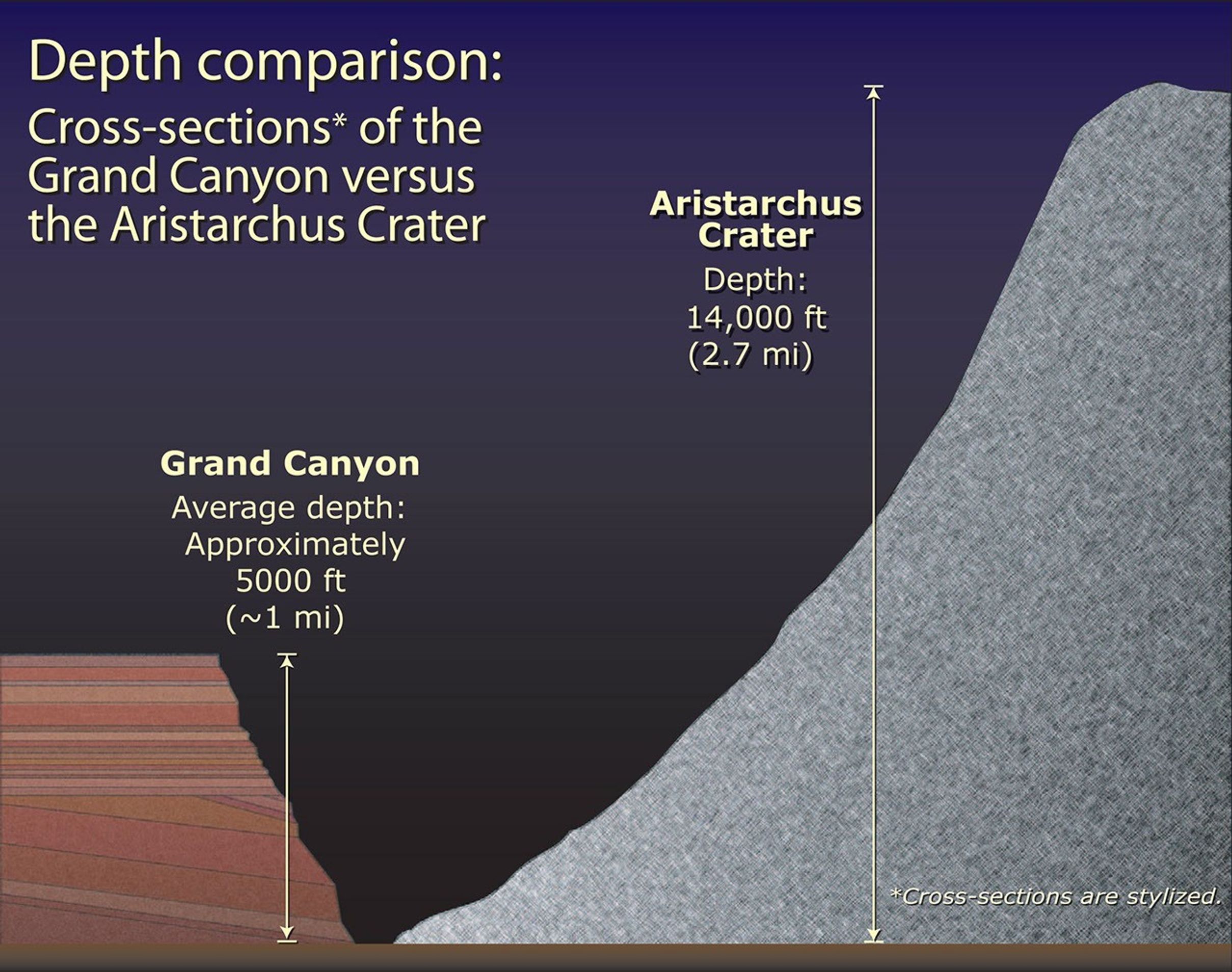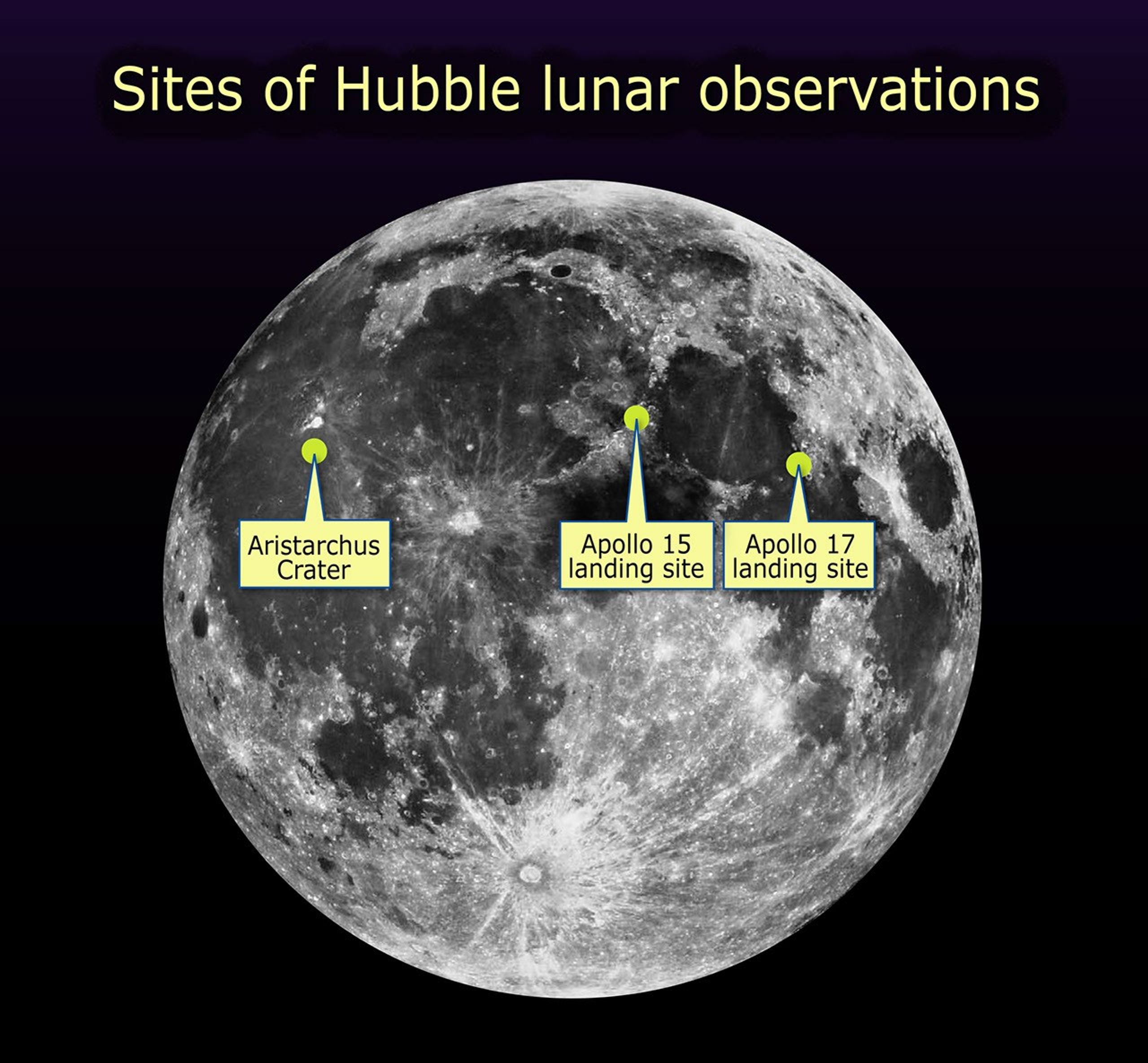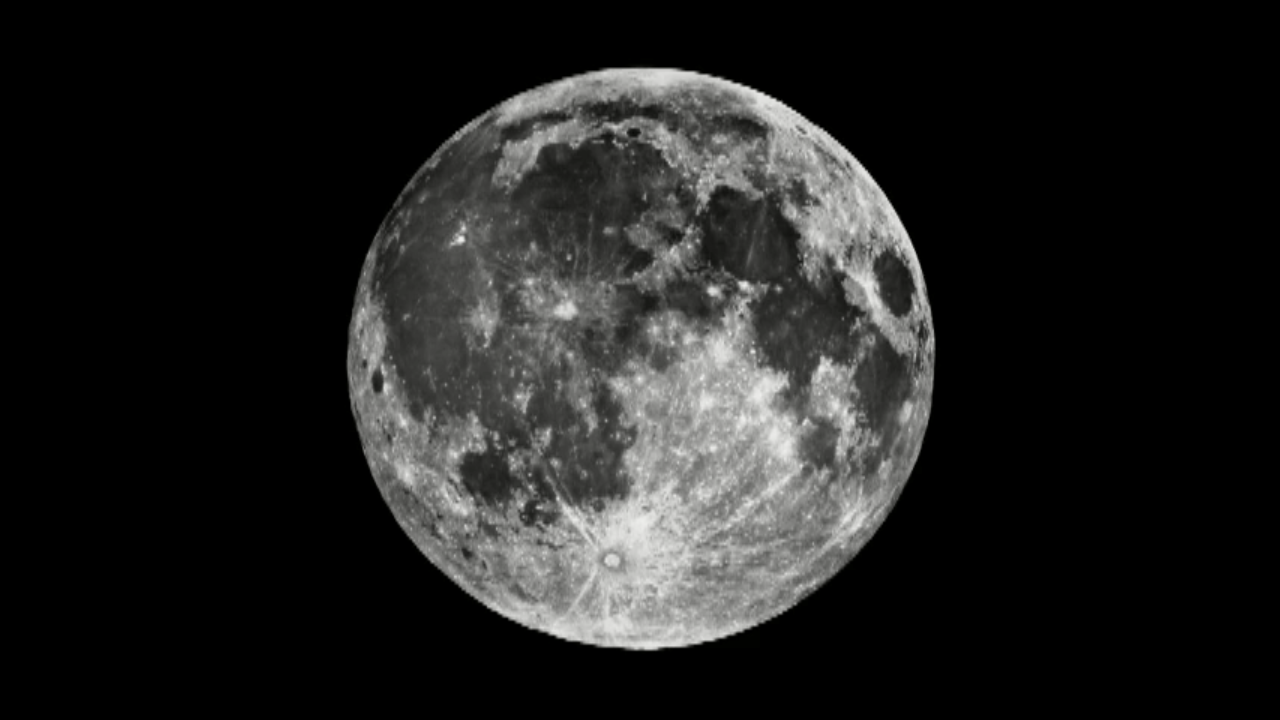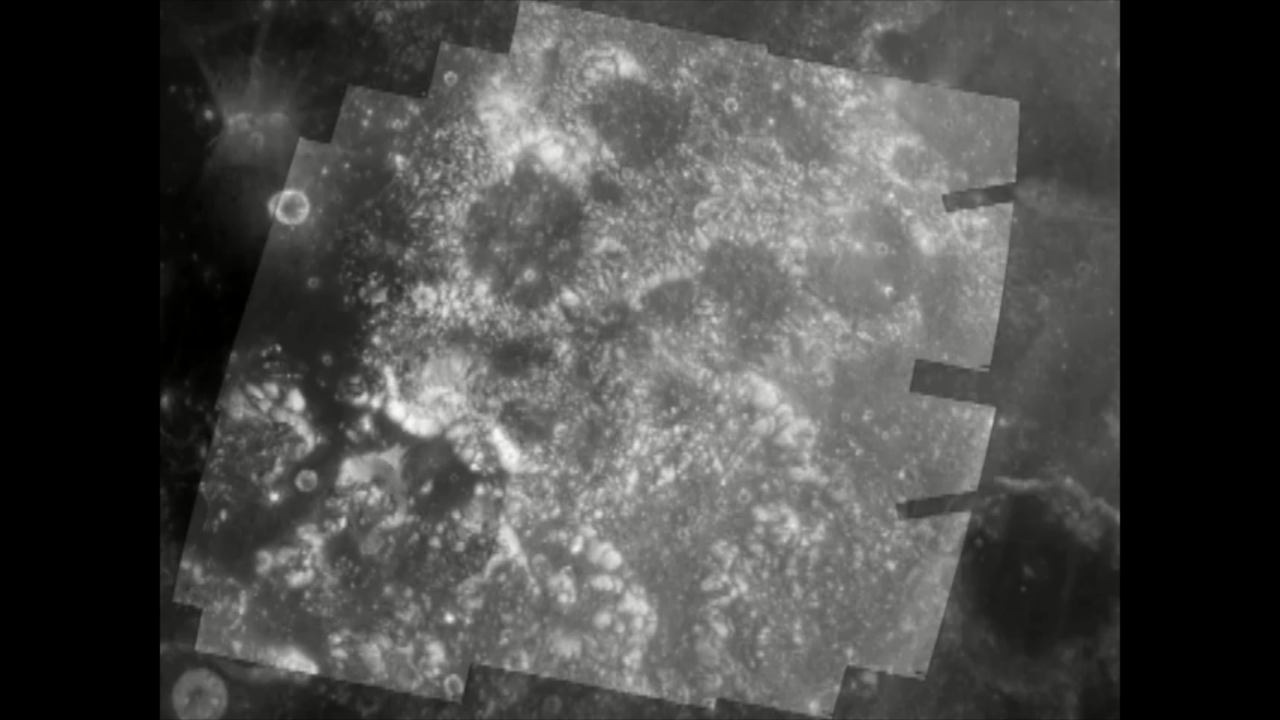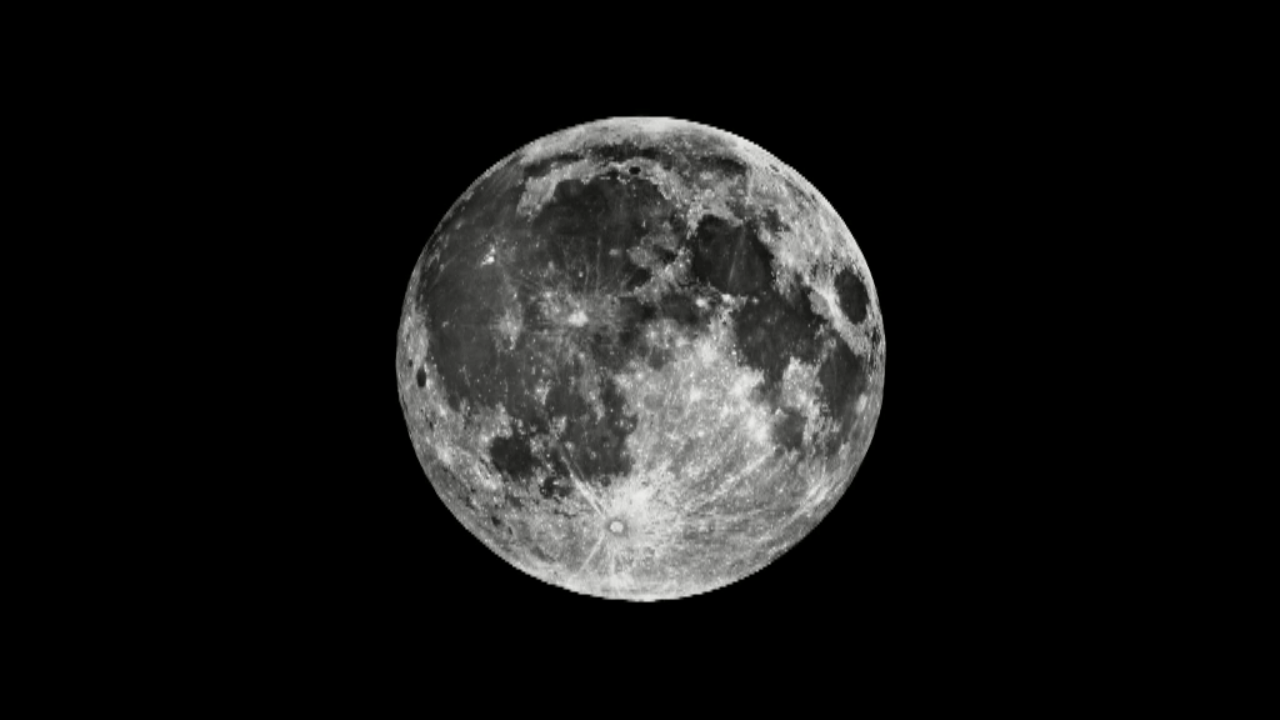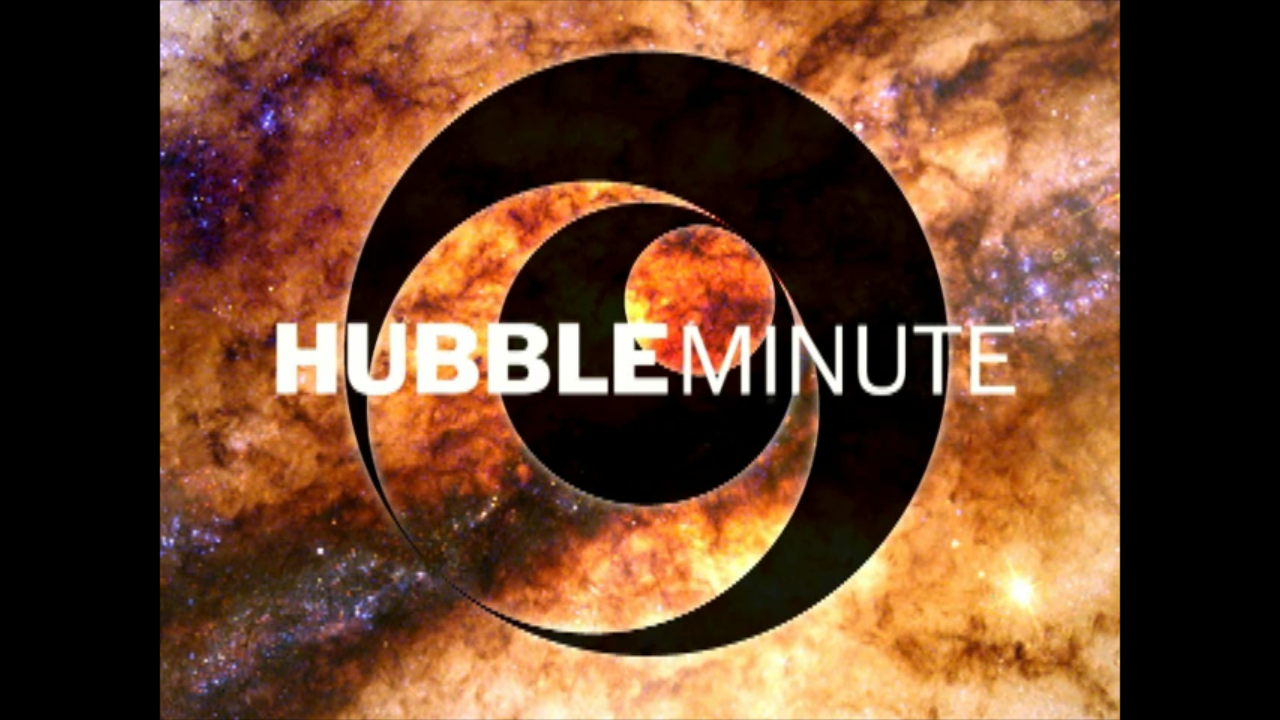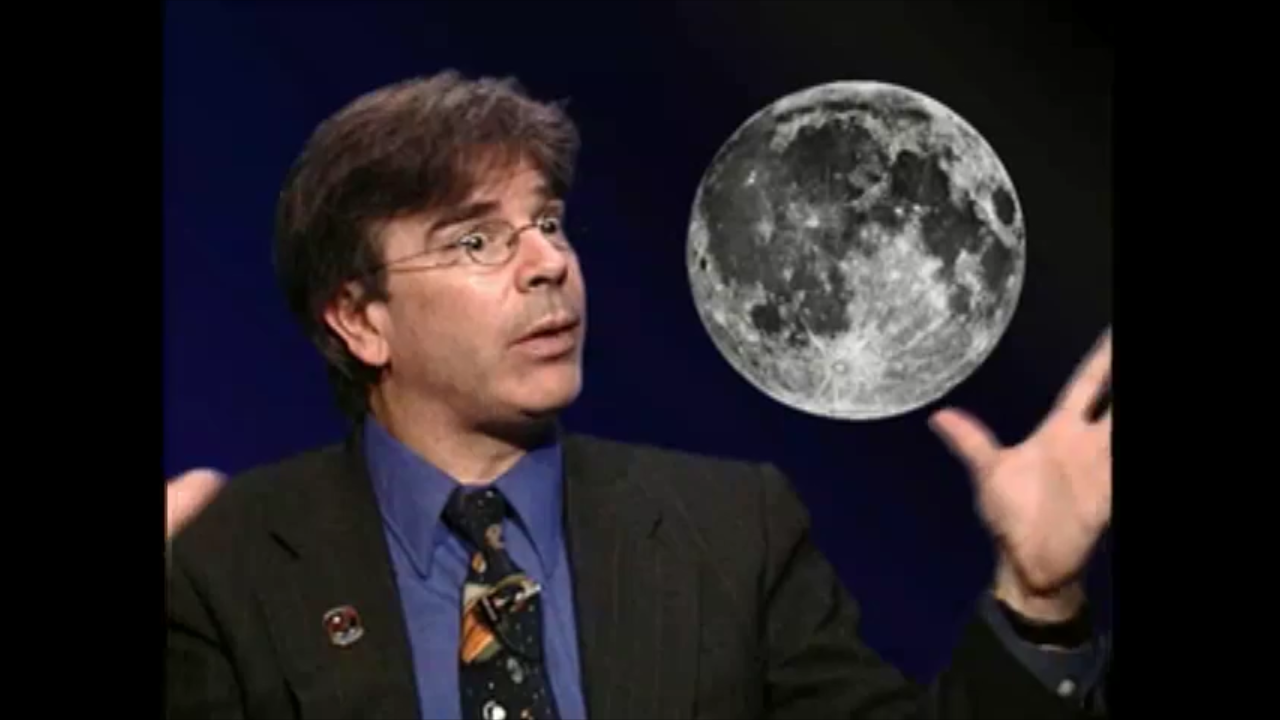1 min read
Aristarchus Site w/ Color Overlay – 3D Topography
- Release DateOctober 19, 2005
- Science ReleaseNASA’s Hubble Looks for Possible Moon Resources
- Credit
Related Images & Videos

Aristarchus Plateau on the Moon
The Hubble Space Telescope Advanced Camera for Surveys imaged Aristarchus crater and nearby Schroter's Valley rille on Aug. 21, 2005. The Hubble images reveal fine-scale details of the crater's interior and exterior in ultraviolet and visible wavelengths at a scale of...

Hubble Reveals Potential Titanium Oxide Deposits at Aristarchus and Schroter's Valley Rille
This view of the lunar impact crater Aristarchus and adjacent features (Herodotus crater, Schroter's Valley rille) illustrates the ultraviolet and visible wavelength characteristics of this geologically diverse region of the Moon. The two inset images illustrate one preliminary...

Aristarchus Plateau in Ultraviolet Light
The Hubble Space Telescope Advanced Camera for Surveys imaged Aristarchus crater and nearby Schroter's Valley rille on Aug. 21, 2005. The Hubble images reveal fine-scale details of the crater's interior and exterior in ultraviolet and visible wavelengths at a scale of...

Schroter's Valley Rille in False Color
This color-composite focuses on a section of Schroter's Valley (rille) and employs ultraviolet- to visible-color-ratio information to accentuate differences that are potentially diagnostic of ilmenite- (i.e, titanium oxide) bearing materials as well as pyroclastic glasses. Bluer...

Aristarchus Crater in False Color
This color composite focuses on the 26-mile-diameter (42-kilometer-diameter) Aristarchus impact crater, and employs ultraviolet- to visible-color-ratio information to accentuate differences that are potentially diagnostic of ilmenite- (i.e, titanium oxide) bearing materials as...

Apollo 17 Landing Region
This image showcases Hubble Space Telescope's first high-resolution ultraviolet and visible imaging of the Apollo 17 landing region within the Taurus-Littrow valley of the Moon. Humans last walked and drove on the lunar surface in this region (marked "+" in the image at left and...

Hubble View of Apollo 17 Landing Region on the Moon
This image showcases Hubble Space Telescope's first high-resolution ultraviolet and visible imaging of the Apollo 17 landing region within the Taurus-Littrow valley of the Moon. Humans last walked and drove on the lunar surface in this region (marked "+" in the image) in...

Hubble Image Overlaid on Modeling of Apollo 17 Landing Site
This image was constructed by overlaying the Hubble Advanced Camera for Surveys image of the Apollo 17 landing region within the Taurus-Littrow valley, taken on Dec. 16, 2005, with a digital-terrain model acquired by the Apollo program to provide a perspective view looking from...

Apollo 17 Astronaut's Snapshot of Taurus-Littrow Valley
This image was taken by the Apollo 17 astronauts (Dr. H. Jack Schmitt and Gene Cernan). It illustrates a view of the rim of Shorty crater and the lunar roving vehicle against a backdrop of the mountain-like massifs that define the Taurus-Littrow valley.

A Close-Up View of the Aristarchus Crater
The Hubble Space Telescope's Advanced Camera for Surveys snapped this close-up view of the Aristarchus crater on Aug. 21, 2005. The crater is 26 miles (42 kilometers) in diameter and approximately 2 miles (3.2 kilometers) in depth, and sits at the southeastern edge of the...

Hubble's View of the Apollo 17 Landing Site
This image of the Taurus-Littrow valley shows the Apollo 17 landing site (the "+" symbol in the image). This region marks the last time – December 1972 – that humans walked and drove on the Moon's surface. Astronomers are using the Apollo 17 images (and those of the Apollo 15...

An Astronaut's Snapshot of the Moon
Apollo 17 astronauts Dr. H. Jack Schmitt and Gene Cernan took this image of the Moon's Taurus-Littrow valley. The view shows the lunar roving vehicle near the rim of Shorty crater. In the distance are the mountain-like massifs that define the Taurus-Littrow valley. This region...

NASA News Conference: Lunar Prospecting with Hubble (Webcast)
NASA hosted a news conference October 19th, 2005 at 1pm to discuss new Hubble Space Telescope images of the moon's surface in ultraviolet light. Hubble's resolution and sensitivity to ultraviolet light have allowed the telescope to search for important oxygen-bearing minerals on...
Share
Details
Claire Andreoli
NASA’s Goddard Space Flight Center
Greenbelt, Maryland
claire.andreoli@nasa.gov

























